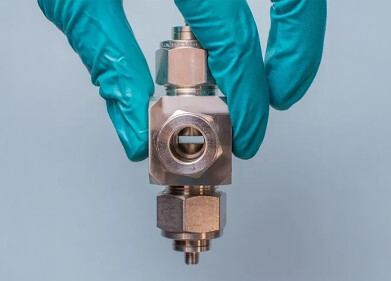Analytical Instrumentation
Can You Turn Sunlight into Fuel?
Sep 20 2020
In an exciting breakthrough for clean energy, scientists at the University of Cambridge have engineered a device that uses water, sunlight and carbon dioxide to produce renewable fuel. Drawing inspiration from the photosynthesis process used by plants, the device harnesses natural resources to create oxygen and formic acid. As well as being used as a standalone fuel, formic acid can also be manufactured into hydrogen fuel. With significantly lower carbon emissions than fossil fuels, the device could emerge as a key player in the clean energy revolution.
"We want to get to the point where we can cleanly produce a liquid fuel that can also be easily stored and transported," says Erwin Reisner, professor in the Department of Chemistry at the University of Cambridge.
Harnessing the power of photosynthesis
The wireless device resembles a thin sheet and is made from photocatalysts, light-absorbing materials that spark chemical reactions. When the sheet is exposed to water and sunlight the chemical reaction is triggered, and the device produces formic acid. The process mimics photosynthesis, which sees absorbed sunlight excite electrons into a higher state and as a result, generate chemical energy. With no need for wires or electricity, the device is self-powered has no environmental impact. In fact, it actively removes carbon dioxide from the atmosphere which adds to its eco-friendly credentials.
Reducing global dependency on fossil fuels
With minimal by-product to dispose of, manufacturing fuel using the new device is easy and cost effective. Moving forward, the team plan to scale up the device and test its viability for commercial applications. Ultimately, Reisner and Wang hope the device could help reduce the planet’s dependency on fossil fuels and combat climate change.
"It's been difficult to achieve artificial photosynthesis with a high degree of selectivity so that you're converting as much of the sunlight as possible into the fuel you want, rather than be left with a lot of waste," says Qian Wang, who worked on the project with Reisner. “We were surprised how well it worked in terms of its selectivity – it produced almost no by-products.”
The transition towards clean energy is forcing the transport industry to adapt and innovate. To find out more about the latest EV developments don’t miss ‘The need for dedicated lubricants following heightened demand for electric vehicles.’ Featuring insight from experts at Koehler Instrument Company, the article spotlights the development of dedicated lubricants for EVs.
Digital Edition
PIN 25.5 Oct/Nov 2024
November 2024
Analytical Instrumentation - Picturing Viscosity – How Can a Viscometer or a Rheometer Benefit You? - Sustainable Grease Formulations: Evaluating Key Performance Parameters and Testing Method...
View all digital editions
Events
Nov 27 2024 Istanbul, Turkey
Biogas Convention & Trade Fair 2024
Nov 27 2024 Hanover, Germany
Dec 03 2024 Dusseldorf, Germany
Dec 08 2024 Anaheim, CA, USA
Turkey & Black Sea Oil and Gas
Dec 11 2024 Istanbul, Turkey



















